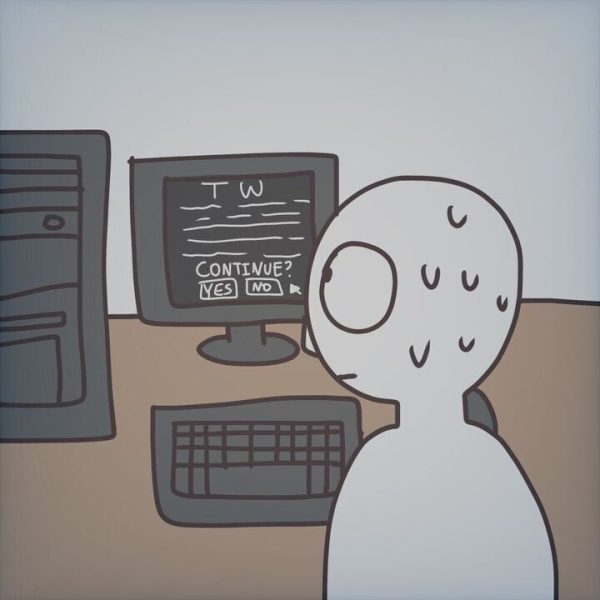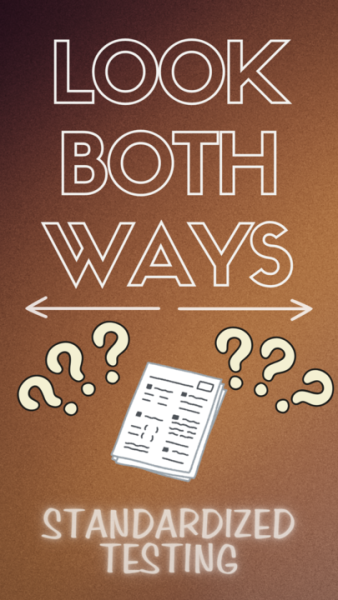Social stigmas around mental health need to stop
December 1, 2019
Words like crazy, mad, insane and feeble-minded may come up when thinking about mental illness. Whether they are antiquated or in present-day vernacular, negative sounding words like these are linked to the social stigma surrounding mental health. To combat this stigma, students can take certain actionable measures to ensure they are contributing toward the acceptance of mental illness.
Social stigma
Mental illness is a growing concern among college students, according to an Oct. 4 Forbes article. College students are experiencing increased levels of stress, depression and anxiety, as well as a 30 to 40% increase in the use of college mental health counseling services.
Between individuals aged 15 to 24, there has been a 51% increase in the suicide rate within the past 10 years, according to the Centers for Disease Control and Prevention. This rise in suicide may be associated with the rise in stress, depression and anxiety.
“In my sorority, there have been some issues with mental health,” Rylie Kues, junior rehabilitation and disability services major, said. “There were wellness checks conducted for people who were experiencing suicidal ideation.”
With the increased rates of mental illness comes an underlying social stigma, which may be fueled by people’s insecurity, ignorance or the disingenuous use of mental illness within politics, according to an April 2018 Forbes article.
The media and entertainment industry have contributed to the social stigma by trivializing and stereotyping individuals afflicted with mental illness. For example, “Split” portrays a man with mental illness as a murderous villain, even though mental illness and murderous tendencies are not the same.
Social stigma may lead to many negative consequences. Consequences can include bullying, physical violence or harassment; a reluctance to seek help; a lack of understanding from family, friends or co-workers; fewer opportunities in work or school; and concurrent thoughts of failure and hopelessness, according to a May 2017 Mayo Clinic article.
Reduce stigma
A constructive way to reduce social stigma is for the general population to become better informed about what mental illness actually is. Students can start this process by educating themselves on the nature of mental illness.
Angela Grippo, associate professor of neuroscience and behavior, said parts of the brain disrupted by mental illness include regions associated with mood, emotion and stress responses. Grippo researches the overlap between psychological states and biological functioning, especially the link between depression and heart disease.
“Stress from the environment plays a very important role in mental illness and physical illness,” Grippo said. “If someone has a genetic predisposition to depression, and you add on top of it stress from the environment, that may push the person over the threshold into actually developing depression.”
Stress and certain mental illnesses can lead to a lack of blood and oxygen getting to the brain, which can have devastating consequences on an individual’s ability to function normally, Grippo said.
“The heart has to work harder to pump blood, and the extra workload on the heart may lead to diseases over time,” Grippo said. “Someone who is at risk for heart disease may be at risk not only for peripheral problems, but also central brain problems, like oxygen not getting delivered to parts of the brain. That might affect lots of things, such as cognition, mood and behavior, too.”
Those suffering from mental illness should not be blamed for their condition because they deserve the same sympathy as a person suffering from any other bodily disease.
“I think it’s a very unfortunate misperception when people think someone has full control over their mood or emotion,” Grippo said. “If somebody talks about how they have a heart disease, do we view that condition differently than somebody who talks about having depression or anxiety?”
How to help
Students can do certain things to relieve the burden people with mental illness must deal with. One way to help is to avoid the alluring sensation of group harassment and bullying.
“Be yourself, and don’t be a follower,” junior business major Myles Sanders said. “Just because you see one person talking about somebody else doesn’t mean you have to repost it or continue talking about the individual.”
Students can try to avoid words that aren’t necessarily meant to describe their feelings and emotions.
“People tend to exaggerate, saying everyday lingo like ‘this is the worst day ever,’ ‘I just want to kill myself,’ and feeling like they’re having a mental breakdown,” Kues said. “That’s a slap in the face to those who actually have mental health problems. You don’t really know what that feels like.”
If a student recognizes someone is severely suffering from a mental illness, they should know the limitations of their own inexperience in dealing with these matters.
When helping a student, sometimes it is best to reach out to external resources for proper or professional help.
To help those struggling to escape the clutches of mental anguish, students can educate themselves on the nature of mental illness, be themselves, avoid using harmful language and know when to get help. These things may help initiate the removal of barriers associated with having a mental illness.













